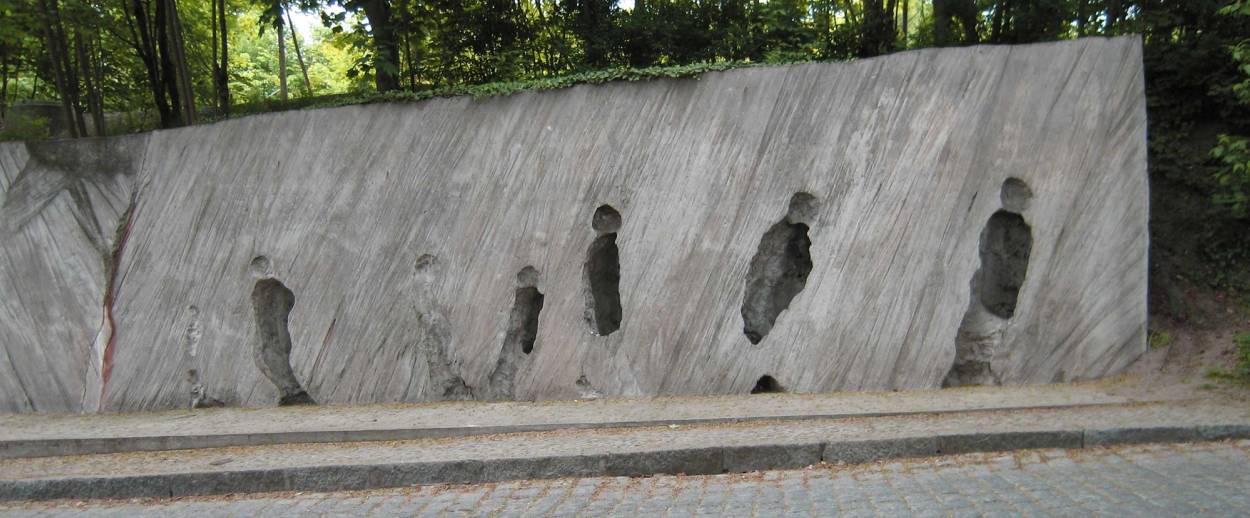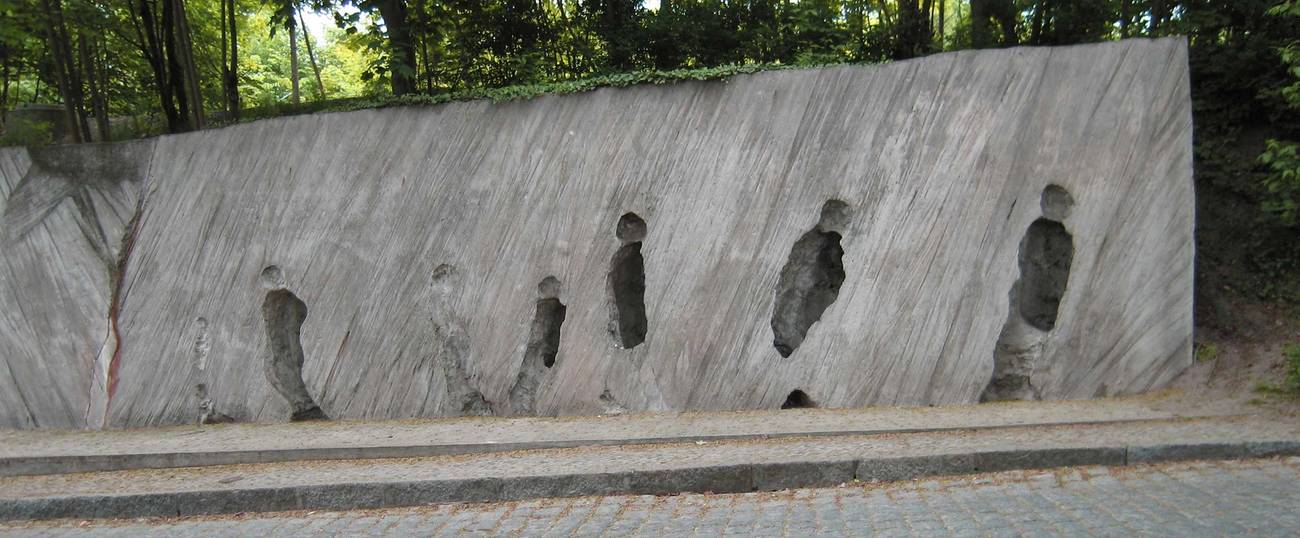In a Masterful New Book, an Author Looks to Holocaust Memorials for Clues to His Family’s Fate
Victor Ripp’s ‘Hell’s Traces’ is a fine meditation on trying to make sense of history’s ultimate senseless act of violence




Some great books, like some sublime human experiences, defy description. How would you speak of making love, say, or of lying on the grass in the spring, watching the sky with heavy eyes? There’s no good approach, really: You could try being a pedant and risk robbing the moment of its charms, or you could turn to metaphor and risk draining it of specificity. The same is true of our darkest hours; they, too, pull on us precisely because they lie in the shadows, just outside the reach of our language.
Victor Ripp understands this well. His book, Hell’s Traces, published earlier this year, is a travelogue to places that no longer exist and can never be known, to the epitome of the indescribable—the Holocaust. One branch of his family, the Kahans, fled Europe in time; another, the Ripps, wasn’t so lucky. His cousin Alexander, a toddler, was snatched from his Paris apartment and dispatched to his death at Auschwitz. Why did some relatives survive while others perished? What did they know, or feel, or do each day as the ice grew thinner? And what are we, born in the aftermath of the catastrophe, to do with the burden of their memory?
There are, of course, no good answers, which is why Alain Resnais’ Night and Fog—by far the most haunting work about the Holocaust committed to film and very much an ancestor of Ripp’s evocative book—makes a point of repeatedly reminding its viewers that it is “useless to describe what went on in these cells” and that “no description, no picture can reveal their true dimension.” Resnais, working barely a decade after the liberation of the camps, wonders whether remembrance is an exercise in futility. Six decades later, Ripp is asking the same question.
To answer it—or at least try—he sets out to visit 35 Holocaust memorials, everywhere from New Jersey to Grodno, Belarus. The view we get of these constructions will ring true to anyone who has ever solemnly stood in front of one and realized it failed to stir the soul. Ripp is an able analyst of the intellectual conceits behind each monument—some subtle and symbolic, others more blunt—but he’s even better at looking around each memorial and sensing the invisible forces that shape it. In New Jersey, for example, the memorial he visits features a statue of an American soldier rescuing a camp survivor; if you’ve missed the moral of the story somehow, you need only to look up at the Statue of Liberty gleaming in the distance to realize that the memorial wasn’t so much about the victims but about their heroic redeemers. The Soviets, naturally, used their monuments to tell different stories, as did governments across Europe since Communism’s fall, each eager to convey a message that neatly captured the national narrative. Ripp is as aware of these shifting prejudices as he is of the more mundane forces acting on his memorials, like the sheer boredom of locals for whom the monument is just another pile of rocks to hurry past each day on their way to work. And his intricate telling inevitably leads to the same general conclusion: The memorials must fail to live up to their task because their task—filling a void left by the sudden disappearance of millions of human beings—was impossible to begin with.
But the book is far from an abstract existentialist meditation. It’s a search for the fate of very real people, family members both saved and perished. Ripp is meticulous in his pursuit, using each memorial he visits as a launching pad to an investigation—often aided by local historians—into his relatives’ lives. It is here that Ripp’s real gift, an intricate talent for empathy, shines through. Having reconstructed the past from historical records, family recollections, and other conventional research tools, he sets out to feel his way into their stories. Learning, for example, which movies would’ve played in the theater down the block from his grandfather and grandmother’s house in Grodno, he puts himself there with them in the dark, imagining them nodding in agreement to The Forged Coupon, a movie based on a Tolstoy novella skewering Russian hypocrisy, or being moved by The Life of Jews in Palestine, a documentary about a cause, Zionism, they firmly supported.
These small exercises in empathy lead to larger, more intricate ones. Why did one part of the family sense the danger in time and the other not? The answer isn’t a thesis but a set of disparate clues, all of them emotional and none of them necessarily adding up to a coherent argument. Those, like the Kahans, who did business abroad, say, could more easily imagine themselves in the context of the world at large, while the Ripps, ensconced in their gated Paris home, had every reason to believe their liberty-loving republic would protect them. Ripp, reserved and never presumptuous, tries to recapture the turmoil of their inner dramas. And to anchor him in this stormy sea of sensibilities, he returns to his memorials, stony expressions of fractured, tortured realities and of personal stories that make no sense.
***
Like this article? Sign up for our Daily Digest to get Tablet Magazine’s new content in your inbox each morning.
Liel Leibovitz is editor-at-large for Tablet Magazine and a host of its weekly culture podcast Unorthodox and daily Talmud podcast Take One. He is the editor of Zionism: The Tablet Guide.